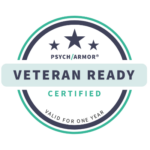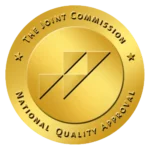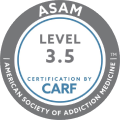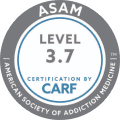Klonopin Abuse: Signs, Side Effects, And Treatment
Klonopin, the brand name for the generic drug clonazepam, is a long-acting medication used to treat anxiety, seizures, and other disorders. Klonopin comes in tablet form. The drug calms brain chemicals by increasing the effects of GABA in the body and brain. GABA (Gaba Amino Butyric Acid) is a neurotransmitter responsible for intercellular communication, leading to a calming effect.
Klonopin is classified as a benzodiazepine, and benzodiazepines (benzos) have a high potential for abuse. Therefore, it is unsafe to use Klonopin without a prescription from a doctor. People who abuse Klonopin without a prescription or who have a prescription but abuse it are at the risk of addiction and health risks.
What is Klonopin Addiction?
Klonopin is a habit-forming Benzodiazepine, with some individuals developing Klonopin addiction within a few weeks after starting taking medication. Taking the dosage of Klonopin prescribed by a doctor has led to the development of dependence in several patients.
Klonopin inhibits specific brain receptors to alleviate anxiety, tension, and difficulty relaxing. Once a person develops an addiction to Klonopin, their brain cannot create a feeling of calmness and relaxation without the substance. This explains why Klonopin addicts struggle to stop and cannot function normally without the drug.
The standard physical, behavioral, and psychological signs of Klonopin addiction include:

The onset of Klonopin addiction occurs when users develop a tolerance to the medication, requiring high doses to get the same effects as before. Some users subsequently begin to exceed their prescription dosage or take the substance for recreational purposes.
Eventually, Klonopin users who have developed tolerance will suffer withdrawal symptoms if they discontinue the medication. The Klonopin withdrawal symptoms range from extreme anxiety to seizures. These symptoms can be fatal, making it risky for Klonopin users to discontinue medication without medical supervision.
Klonopin Abuse Statistics
Klonopin is the third most prescribed benzodiazepine in the United States, after Xanax and Ativan, with approximately 27 million prescriptions written in 2011. Consider the following Drug Enforcement Administration statistics:
- In 2011, based on the amount seized and processed in forensic laboratories, Klonopin was the second-most diverted benzodiazepine.
- Approximately 5 million Americans above 12 have taken a benzodiazepine like Klonopin.
- In 2011, the drug was linked to thousands of calls to poison control and about 63,000 visits to emergency rooms.
Side Effects of Klonopin Abuse
Klonopin addiction can result in problems with employment, relationships, and mental and physical health. Side effects of Klonopin addiction are described below.
Short-Term Side Effects
Short-term side effects of Klonopin abuse include but are not limited to:
- Dizziness
- Problems concentrating
- Loss of coordination
- Shallow breathing
- Disorientation
- Drowsiness
- Slurred speech
- Blurred vision
- Lethargy
- Muscle and joint pain
- Loss of sexual libido
Long-Term Side Effects
Long-term effects of Klonopinab use include but are not limited to:
- Cognitive problems
- Overdose
- Weakness
- Increased risk of falls, hip fracture, and car crashes
- Memory loss
- Impair Learning
Long-term Klonopin abuse can lead to tolerance, physiological dependence, and addiction.
Tolerance
Tolerance develops when an individual no longer responds to a substance in the same manner as they did initially. In other words, a higher drug dose is required to get the same effects. Developing tolerance is not addiction, although many substances that cause tolerance are addictive.
Dependence
When Klonopin is taken for an extended period, dependence may develop. The brain becomes used to receiving an outside chemical that enhances the inhibitory signaling activity of GABA. Once dependence occurs and Klonopin levels decline, the user’s central nervous system becomes more susceptible to a condition of unusually high arousal and excitation, which can lead to rebound restlessness, anxiety, and agitation. This mechanism causes many potentially severe acute benzodiazepine withdrawal symptoms.
Withdrawal
Withdrawal symptoms can appear within a week after ceasing or lowering use, often peak within the first week, and begin to subside 3 to 4 weeks after the last dose.
Often, users who are uninformed of the risks of withdrawal will attempt to quit on their own. This might be dangerous, as the dangers of Klonopin withdrawal range from moderate to severe and include anxiety, seizures, and even death if not adequately managed. For this reason, a medically supervised detox or rehab center is recommended to reduce withdrawal problems.
The common Klonopin withdrawal symptoms include:
- Nausea and vomiting
- Anxiety
- Insomnia
- Confusion
- Headaches
- Irritability
- Anger or hostility
- Impaired coordination
- Muscle and joint pain
- Difficulty concentrating
- Nightmares
- Hallucinations
- Sweating
- Seizures
- Dizziness
- Mood swings
- Tremors
Cravings
When a person tries to stop using Klonopin, cravings may appear, indicating an addiction to the drug. Cravings can be both psychological and physical and are often a combination of both. Users will experience them to varying degrees, which may last for a varied period.
Treatment of Klonopin Abuse
Klonopin addiction treatment is a complex and highly customized procedure that trained addiction specialists should only perform. Withdrawal symptoms of Klonopin can sometimes be dangerous; therefore, medical detoxification is recommended. Throughout the medically-supervised detox process, your vital signs will be monitored as your Klonopin dosage is gradually reduced to ensure your safety and enhance your comfort.
Sometimes, longer-acting sedative medications may be necessary to treat any resulting seizure activity. After detox, some individuals may continue their recovery through outpatient treatment, while others will require a more intensive, residential environment that rehab facilities provide.
A person battling Klonopin addiction will get regular individual and group therapy at a rehabilitation center to address and overcome addiction-related complications. Behavioral therapies that are usually provided at alcohol and drug rehab facilities include:
- Cognitive-behavioral therapy (CBT)
- Dialectical behavior therapy (DBT)
- Eye movement desensitization and reprocessing (EMDR)
- Motivational interviewing (MI)
- Contingency management (CM)
- Support group therapy (such as Alcoholics Anonymous or Narcotics Anonymous)
- Family behavior therapy
- Relapse prevention training
- Substance abuse education
- Art therapy, a recreational therapy
- Music therapy, a recreational therapy
Occasionally, other medications may be used as a treatment plan to reduce Klonopin dependence. After completing rehab, many patients continue with treatment – termed “aftercare” – in an outpatient environment, with weekly counseling or drug and alcohol treatment being standard. In combination with outpatient treatment, community-based treatments like 12-step meetings can assist avoid relapse and boost recovery efforts.

Frequently Asked Questions (FAQs)
What does Klonopin do to a normal person?
Klonopin is the brand name for Clonazepam, a long-acting Benzodiazepine. Klonopin reduces brain activity to induce relaxation in its users. It was first developed to help people with epilepsy manage seizures. Later, it was found that the drug’s immediate and powerful calming effects may be used to treat panic attacks.
How long does the high of Klonopin last?
Most people will require two or three daily doses of Klonopin to achieve the desired effect. The maximal concentration of Klonopin is reached between one and four hours after administration, and the absorption speed will vary from one person to other. The drug’s effects may last for up to twelve hours.
Is Klonopin considered a narcotic?
No, Klonopin is not a narcotic (a powerful pain reliever also known as an opioid). And abusing the drug may result in a “high” feeling.
This medicine is an anticonvulsant or an antiepileptic. Additionally, it is used to treat panic episodes. Clonazepam functions by calming the mind and nerves. Klonopin belongs to the class of drugs known as benzodiazepines.
Can you hallucinate from Klonopin?
Yes, you can hallucinate from Klonopin. Klonopin has side effects that impact users’ behavior, such as visual, tactile, or auditory hallucinations.
The Haven Detox Can Help You Live Addiction Free Life
If you are battling Klonopin addiction in South Florida, The Haven Detox can assist you. Our services and treatment programs can assist you in finding relief and overcoming obstacles you may encounter during your recovery. With our medical detox, inpatient programs, and behavioral treatment strategies, you will be on the path to long-lasting recovery.
We can assist you in recovering from the adverse effects of addiction, such as physical and mental illnesses, strained personal relationships, and poor work performance. At The Haven, we will assist you in understanding your addiction and equip you with the resources necessary to remain dedicated to your recovery.
Contact us at (561) 328-8627 today to take the first step towards a better, sober life.






